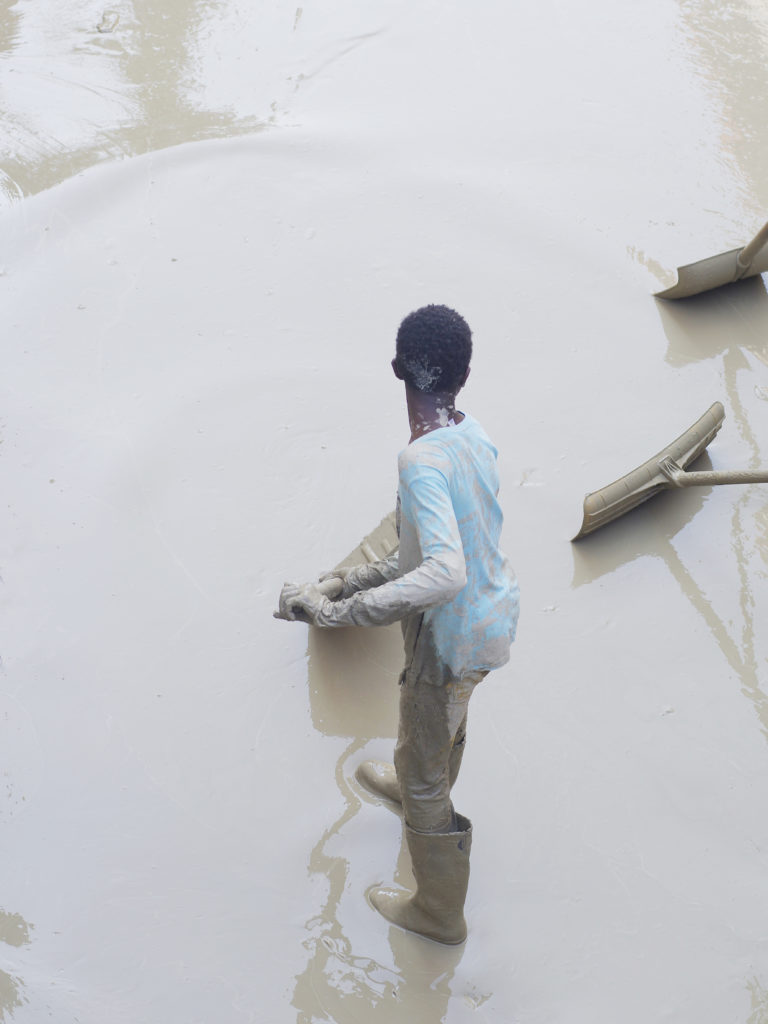Share the post "Capturing the essence of everything. Conversation with photographer Silvia Camporesi"
Our planet is fragile. Some artists investigate territories that apparently seem ‘perfect’ but instead hide unprecedented vulnerabilities. And Italy is among the most fragile countries. Italy is a fragile country. It is wonderful and fragile, two terms that clash because more and more often nature finds a way to rebel and thus reminds human beings that we must prevent and therefore protect the territory. Protect its beauty. In addition to fragility, some artists also investigate the states of mind of those on the front line who choose ‘to be there’ in times of need, when it is necessary.
From Italy, the photographer Silvia Camporesi (Forlì, 1973) with her sensitivity captures the essence of the faces of the cities, the dialogues of the architecture, and the spaces, through a personal language between video and still images; her stories are inspired by literature, daily life, religions and ‘those silences between things’. Her sensitive eyes capture the beauty and fragility of places; an example is the “Sommersi salvati” project conceived following the 2023 flood that hit her land: Emilia-Romagna.
Camporesi’s most recent artistic period is dedicated to reading the landscape, she tells us all about it in this interview for MuseumWeek magazine. So, how did your passion for photography begin?

“I studied philosophy at the University of Bologna and during those years I discovered a profound interest in photographic images. I went ‘to the workshop’ of a photographer from my town, who taught me the technique and printing in the darkroom, after which I tried to apply the study method learned in philosophy to an idea of photography more devoted to concepts than to form and aesthetics”.
Your current research is focused on places and the Italian landscape, such as the “Italia in attesa” project. What is it about?
Since 2011, the year of the “La Terza Venezia” series, all my research has been aimed at Italy: I began an initial exploration of the twenty Italian regions with the “Atlas Italiae” series (2015), a project dedicated to abandoned places; then again in 2023 I published Mirabilia, an exploration of 99 unusual and little-known places spread across the Italian regions.
At the same time, I also dedicated myself to commissioned projects that always have to do with our regions, such as the series “Cose che non fanno rumore”, part of the collective exhibition “Italia in attesa”, a project commissioned by the Ministry of Culture in twelve photographers, during the lockdown period.
Each of us was asked to explore the spaces of nature and culture immersed in the silence of those months, and I worked on the areas of my childhood, namely the sea and the mountains of Romagna. Now I have just started a new investigation aimed at the theme of water: its presence and its absence.
Speaking of places, among others, Forlì, Bologna, Cesena, Faenza, Solarolo, and Bagnacavallo, last year your region Emilia-Romagna was hit by a strong flood with unprecedented damage. Can you tell us how you experienced this dramatic situation and the project “Sommersi salvati” that came out of it?
On 16 May 2023, Romagna was hit by a terrible flood. Fortunately, I live in one of the areas that were not submerged by water, so I took my camera and for a month I documented, every day, what had happened.

I had never dealt with documentation or reportage, but in this case, I felt compelled to do so, as my city was part of the drama. I did it without having experience with reportage codes, so I used the methods I knew, but obviously, what counted above all was the emotional involvement.
In those days I also had the opportunity to photograph the library of the Episcopal Seminary of Forlì, a space containing 150,000 volumes, many of which are ancient, totally submerged in water and especially mud.
“Sommersi salvati”, a title borrowed from Primo Levi’s masterpiece, recounts those days, without ever dwelling on any form of pain. They are sometimes soft, still images, and for the first time in a long time, I have reintroduced the human figures. A selection of photographs has become an exhibition that is touring various Italian cities.
If you had to describe in a few words the relationship between humans and nature today?
It’s something I wonder about very often and my idea is that it is a relationship in constant re-definition. Man is nothing compared to nature and this comforts me, in the face of the crimes we commit against him every day. Perhaps it would be necessary to carry out a general simplification, and more stringent rules on aspects of life but, as always, economic interests win.
Continue on MuseumWeek magazine.
